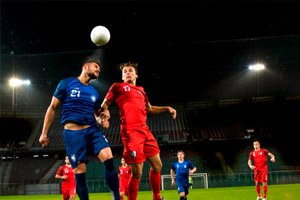
All iLive content is medically reviewed or fact checked to ensure as much factual accuracy as possible.
We have strict sourcing guidelines and only link to reputable media sites, academic research institutions and, whenever possible, medically peer reviewed studies. Note that the numbers in parentheses ([1], [2], etc.) are clickable links to these studies.
If you feel that any of our content is inaccurate, out-of-date, or otherwise questionable, please select it and press Ctrl + Enter.
Headbutts in soccer may cause more brain damage than previously thought
Last reviewed: 03.07.2025
 ">
">Heading the ball in soccer, or "heading," can cause serious damage to the brain, according to research presented at the annual conference of the Radiological Society of North America (RSNA). The research points to a link between repeated head impacts and neurodegenerative diseases such as chronic traumatic encephalopathy (CTE).
Main results of the study
- Damage zones: Researchers have found abnormalities in the white matter of the brains of soccer players who frequently head shots. These lesions are located near grooves on the surface of the brain, particularly in the frontal lobe, the area most susceptible to injury.
- Association with cognitive impairment: More frequent head impacts were associated with poorer performance on verbal learning tasks.
- No serious injuries: Most study participants had never experienced concussions or other diagnosed head injuries, highlighting the potential for harm even without obvious injuries.
Research Methodology
To analyze the brain, the researchers used a new technique called diffusion MRI, which allows them to study the microstructure of the brain. The participants were 352 amateur football players (men and women aged 18 to 53) and 77 athletes from non-contact sports, such as running.
Key findings
- Damage Location: White matter abnormalities caused by impacts are found in locations typical of CTE, such as the frontal lobe of the brain.
- Long-term effects: Brain damage caused by repeated impacts can negatively affect cognitive function over time.
- Risks for other sports: The study's findings are also relevant for other contact sports that involve head impacts.
Statements by experts
"Exploring the potential risks of repetitive head impacts could help make sports safer while maintaining their benefits," said lead author Dr Michael Lipton of Columbia University.
Dr Lipton stressed that understanding the mechanisms of brain injury and its long-term consequences could help develop protective measures and raise awareness among athletes.
Next steps
In the next step, the researchers plan to study the mechanisms underlying the changes detected on MRI, as well as develop strategies to protect the brain from such damage.
These findings highlight the need for more in-depth study of the risks of repetitive head impacts and the implementation of new measures to improve athlete safety.
